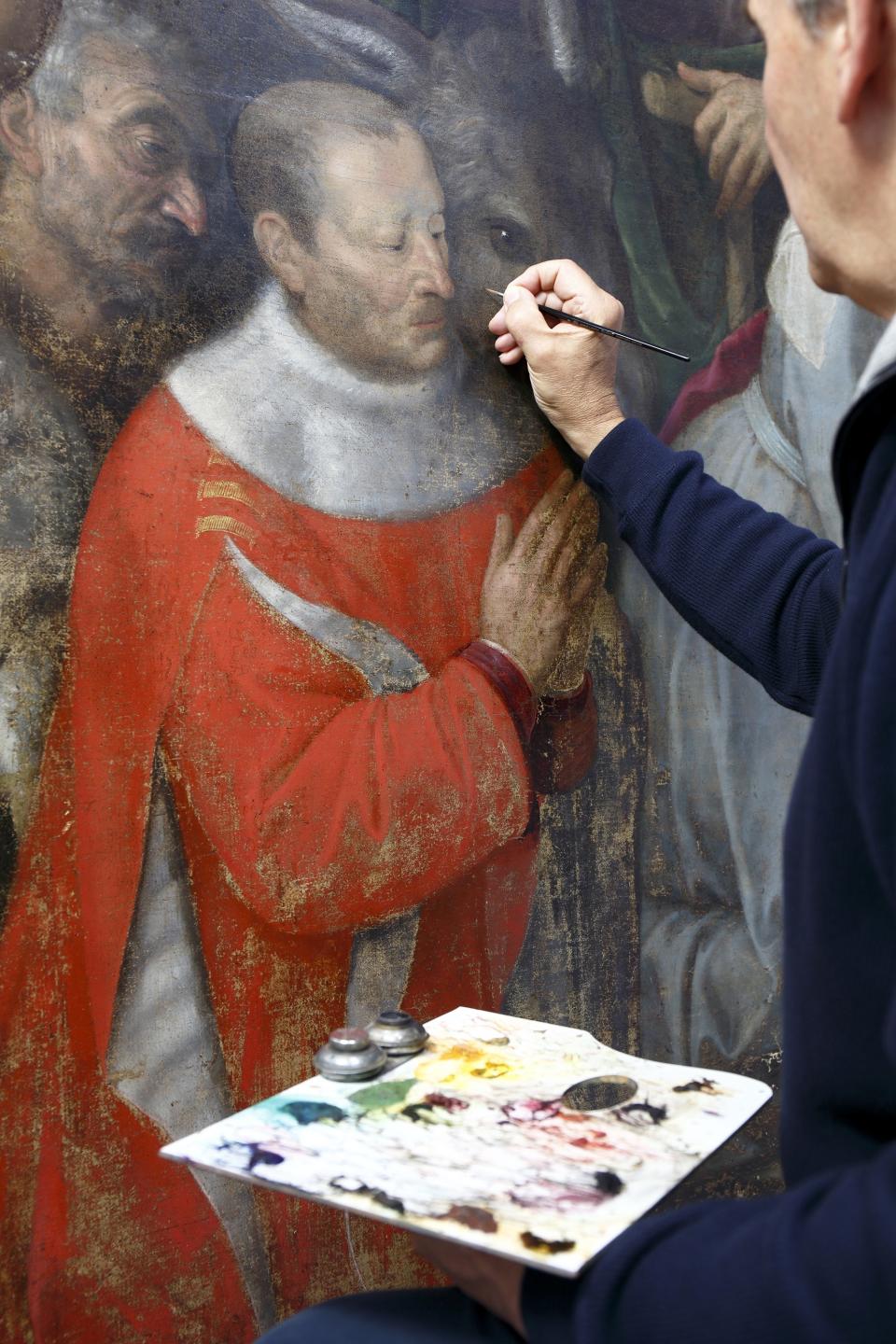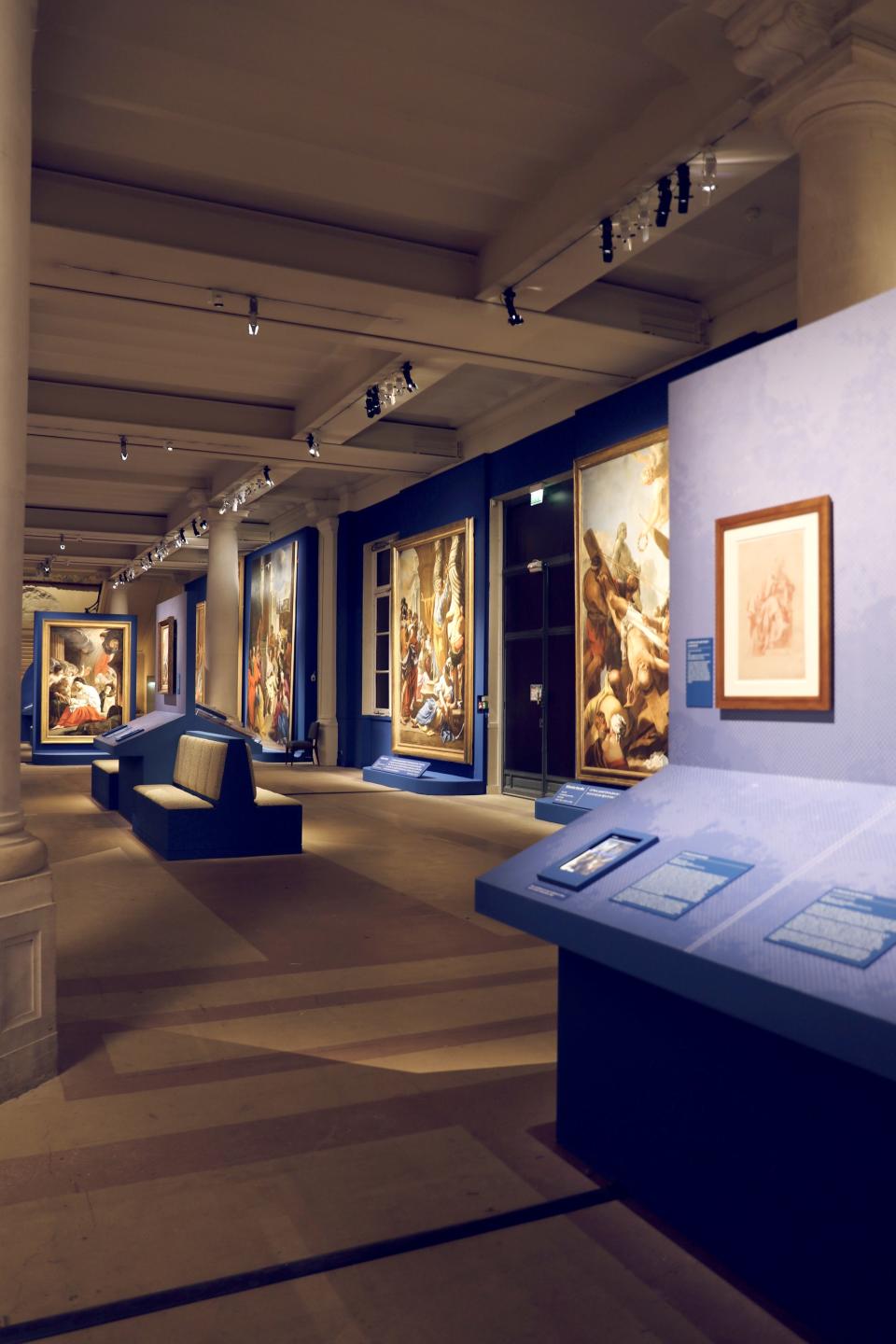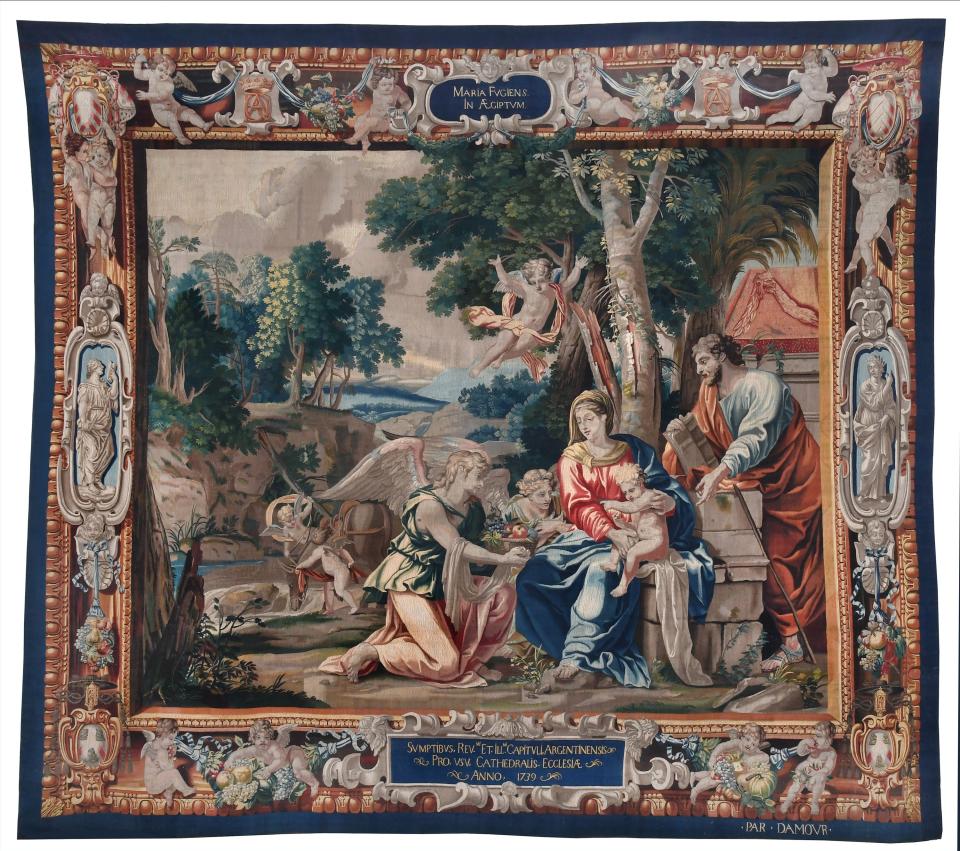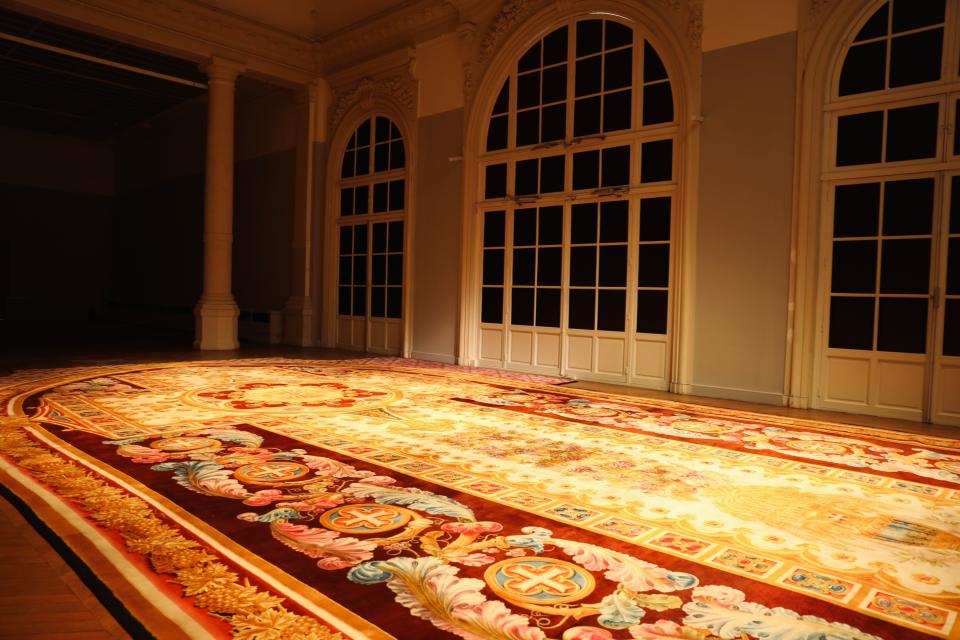This New Exhibit in Paris Examines the Restoration of Notre Dame After the Fire

- Oops!Something went wrong.Please try again later.
Marcel Strauss/Unsplash
On April 15, 2019, the world held its breath as the Notre Dame Cathedral in Paris teetered on the edge of collapse following a severe fire—the precise origins of which are still under investigation. Five years later, the damage has been cleared, the stone inside the cathedral shines anew, and the structure’s mighty spire has been rebuilt and secured in place. With an end in sight to the most significant restoration works, the city’s majestic icon is on track for its grand reopening on December 8, just as President Macron vowed.
In the meantime, there’s a unique opportunity to glean a fresh perspective on the 860-year-old monument. A new exhibition, that previewed on the eve of the April 24 grand opening, showcases masterpieces from the cathedral’s interior that were saved in the days after the fire and restored by specialized experts over the last two years. Seeing these marvels up close meant venturing south of Ile de la Cité, the city’s central island, to the 13th arrondissement where the Mobilier National, one of France’s lesser-known public institutions, preserves and repairs the country’s most valuable historic furnishings and decorative arts.
In the Galerie des Gobelins building, once part of the Gobelins tapestry factory, Restoring the Grands Decors of Notre Dame comes to life. The monumental exhibit is organized by the Mobilier National and the Direction Régionale des Affaires Culturelles d'Île-de-France (a part of the Ministry of Culture) with the support of the Centre de Recherche et de Restauration des Musées de France. During the preview, its curators walked me through a selection of pieces that trace both the beloved cathedral’s decorative history and its future. The short version: It’s a chance to see restored pieces dating back to the 17th century on display outside the cathedral for the first time, juxtaposed with contemporary furnishing.


Among the display of religious paintings from the 17th and 18th centuries that loom large at the start of the exhibit, the most notable are the 13 large-format pieces from a collection of 76 works called Mays. As the curators explained, these paintings were produced by the country’s best artists between 1630 and 1707 and donated to the cathedral by the goldsmiths guild of Paris every year on May 1, in honor of the Virgin Mary. During the Revolution, about 20 of the Mays were dispersed when all ecclesiastical property was seized. Five paintings disappeared, while the rest were transported to the Musée des Petits-Augustins and the Louvre. After the Concordat of 1801, Catholic worship at Notre Dame was restored, and these 13 pieces were returned to the cathedral.
Emmanuel Pénicaut, director of Mobilier National collections, wasn’t surprised when I said I hadn’t seen any of them in nearly twenty years of living in Paris. “These paintings, each four meters high, were hung in the nave's very poorly lit side chapels, hardly visible to the average visitor,” he explained. “Here, people can see them up close and displayed in the order they were painted.”
Each May is presented alongside associated works, such as preparatory drawings, sketches, or engravings. Screens offer a modern touch, highlighting the before and after of the monumental restoration process. Comfortable banquettes serve as helpful reminders to sit in contemplation and admire the vividness of the colors in each restored work, particularly as they are presented at eye level for the very first, and likely only, time.

“The restoration process is key to the experience, especially since science allows us to do things that we wouldn’t have done even 30 years ago when I first started working on historic monuments,” says Marie-Hélène Didier, the National Heritage curator in charge of the Notre Dame restoration project. “Now, we intervene as we go along, removing varnish and grime layer by layer. Before, we tended to remove everything all at once. That’s all here for visitors to see and understand.”
We continued the visit with 14 tapestries depicting the life of the Virgin Mary (displayed in shifts of seven due to conservation constraints) that lord over a stone staircase leading to the second-floor exhibition room. Here, I got a glimpse of what’s to come when the Notre Dame reopens: new liturgical furnishings designed to replace pieces like the altar, the tabernacle, and congregation chairs that were largely destroyed when the vault collapsed.
But the marquee piece on this floor, the one that inspired a chorus of audible gasps during the preview, is the nearly 82-foot ornamental chancel rug, commissioned by King Charles X in 1825 and offered to the cathedral upon its completion by King Louis-Philippe. Partially restored and displayed for the exhibit, the one-ton hand-woven wonder has only been used a few times for grand occasions, like the wedding of Napoleon III, visits from the Pope, or the cathedral’s 850th birthday in 2013.

With the exception of the 14 tapestries that will be returned to the Cathedral of Strasbourg at the end of the exhibition, this exceptional collection of restored masterworks will find its permanent home within the walls of Notre Dame before it welcomes visitors and worshipers once again in December.
Restoring the Grands Decors of Notre Dame, on view at the Mobilier National from April 24 to July 21, 2024. Opening hours are Tuesday-Sunday, 11 a.m. to 6 p.m.
Originally Appeared on Condé Nast Traveler

